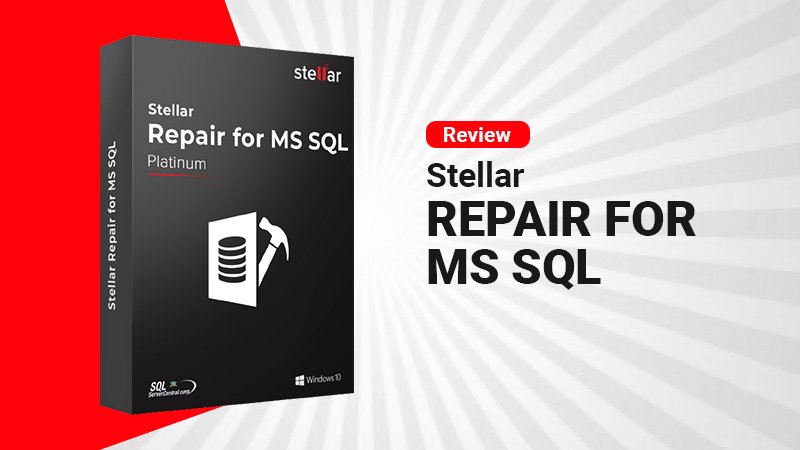Summary: In this Article, you’ll get to read about —
I’m pretty sure that you are already aware of the Stellar Repair for MS SQL software. But let’s recall.
Stellar Repair for MS SQL is a great software to repair and recover damaged or corrupted SQL Server databases. No matter what you have in your database, the software can recover it all – be it tables, triggers, stored procedures, functions, rules, etc. Not only the benefits of it are remarkable but the way you are going to avail them is also pretty astonishing because the software is immensely easy-to-use. It doesn’t even require any prior knowledge of SQL Server. It comes with a free trial version, so you can first try it and then go for it.
Let’s take this further and get to know all about Stellar Repair for MS SQL, which is developed by Stellar – a software house specialized in data recovery and all kinds of file repair software.
Installation of the Software
Let’s start with the installation of the software and see if it’s easy to install or not. But before you begin, visit the Stellar Repair for MS SQL webpage and then simply click on the “Free Download” option.
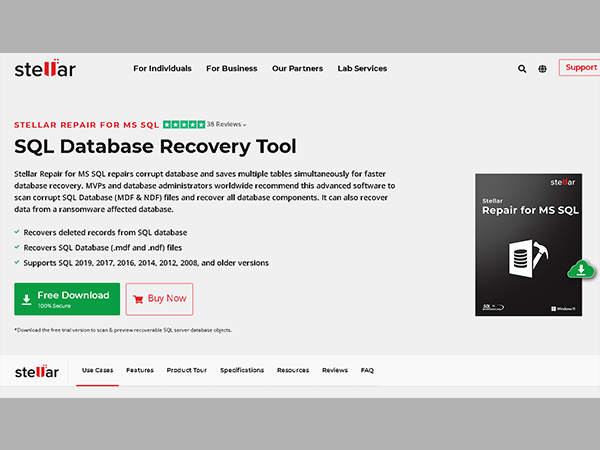
Once the file is downloaded on your device, double-click on the ‘exe’ file.
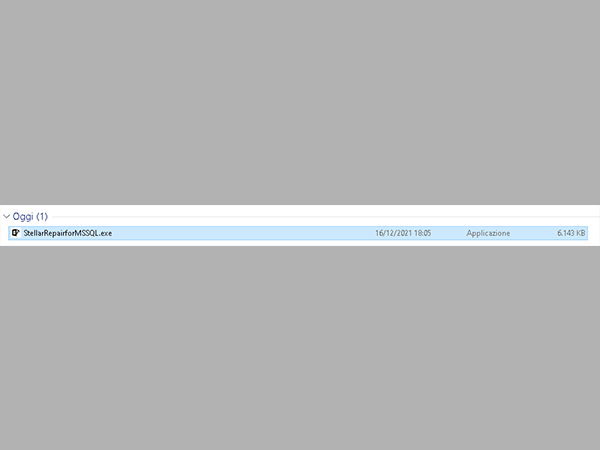
And then, the installation process will begin. Once it starts, click on the Next button.
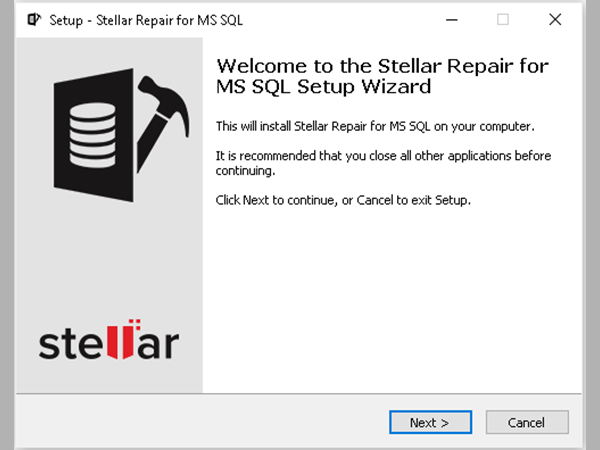
Then, you will be asked to accept the agreement. Move ahead by clicking on the Next button.
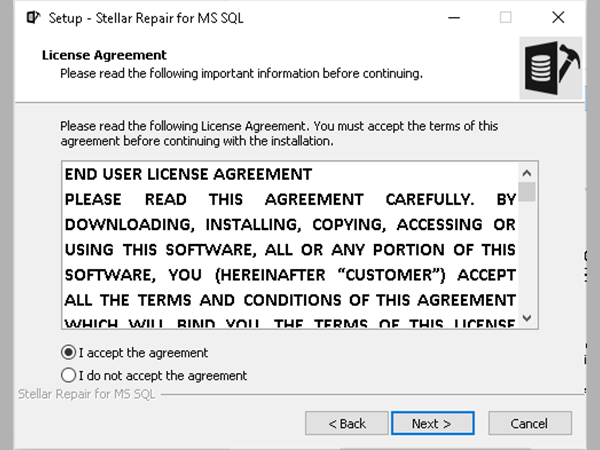
Then, pick a folder/location to install the program on your device and click on Next.

After that, you will be asked about where the setup places the program’s shortcuts. Once selected, click on Next.

However, if you are looking to add some additional shortcuts to it, you can easily select the desired option and then press the Next button.
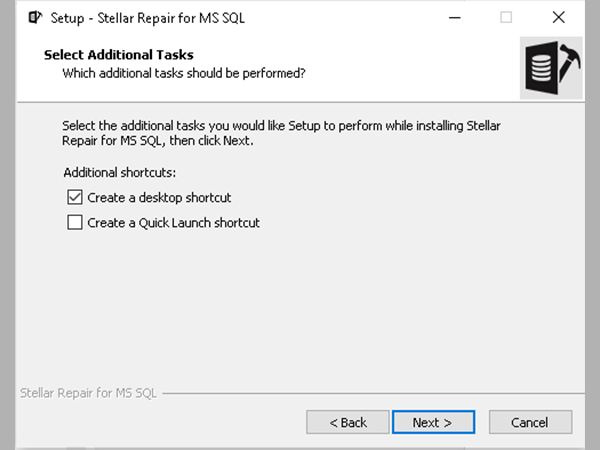
Then, click on the Install option.

And within a few seconds, the program will be all set to run.

Then, you will have to register the software. To do so, simply click on the Activation option, fill in your license key, and click on the Activate button.

You will receive the following message.
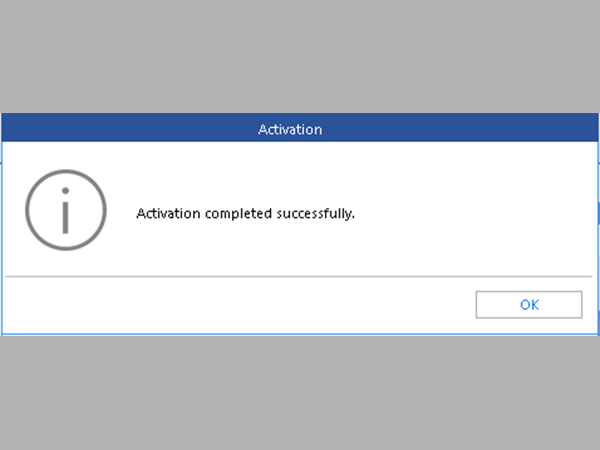
And just like that, you are all set to get started with the software. Let’s now move ahead and learn about repairing the database.
Repairing the Database
Now that you have installed the program, let’s move ahead and comprehend how to repair damaged or corrupt files.
Locate and select your MDF file and press the Repair button.
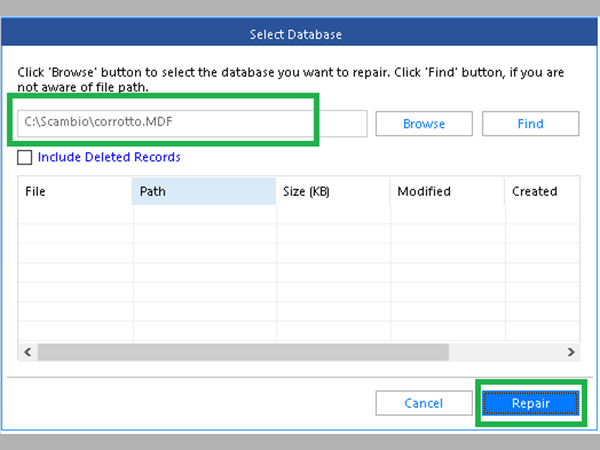
You will see two modes of recovery on your screen – Standard and Advanced. You can pick the one that suits you the best. We’ll start with the Standard mode for now.
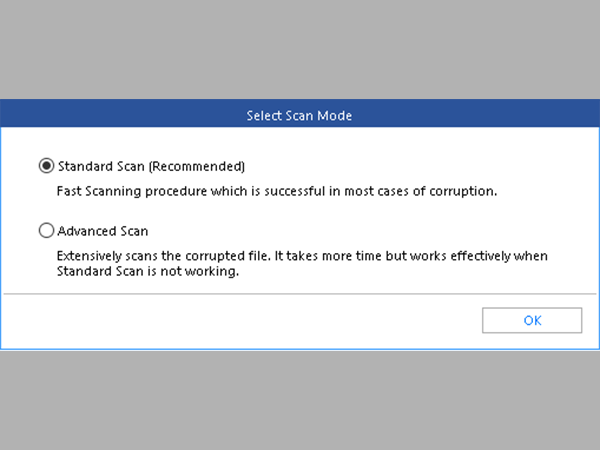
And then, the scanning process will begin. You can see the progress from the progress bar displayed on your screen.
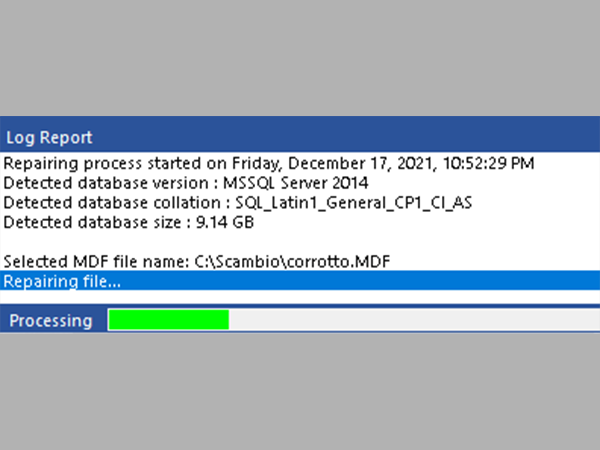
You may be impressed by the fact that the result of the scanning will be saved and you can reuse them if you want to. And not just that, the data is also presented in the SSMS format. For each table, you can easily see the columns, foreign keys, unique keys, indexes, statistics, etc.

Then, on the database level, you will see all the views and programmability parts. This includes stored procedures, functions, triggers, etc.

Saving the Repaired Database
The last step of the entire process is to save the repaired data. You can select the place where you want to save the data, such as in a new database, an existing database, or in another format (CSV, XLS, or HTML).
Choose the very first option and create a new database.

Then, click on the Next button and enter the information related to the server.
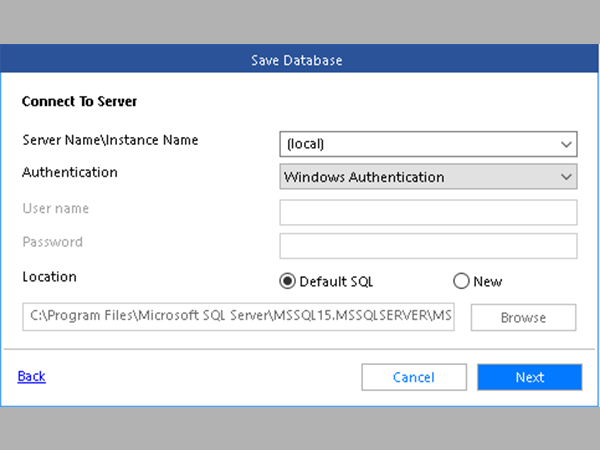
Click on the Next button and then click on Save Mode.
Here, we have selected the Standard Saving mode.
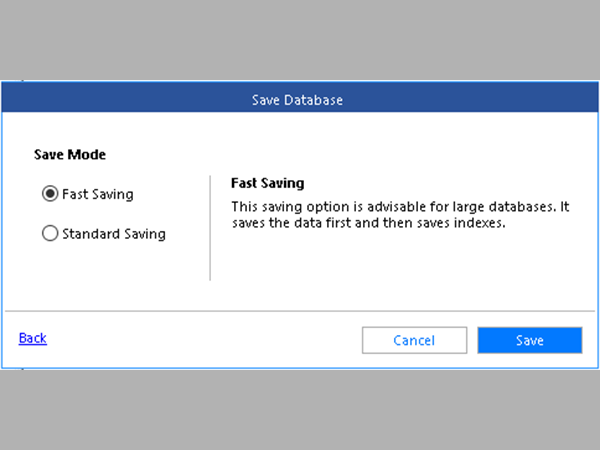
Only one table at a time is recovered. When the process is finished, the following message will be displayed on your screen.
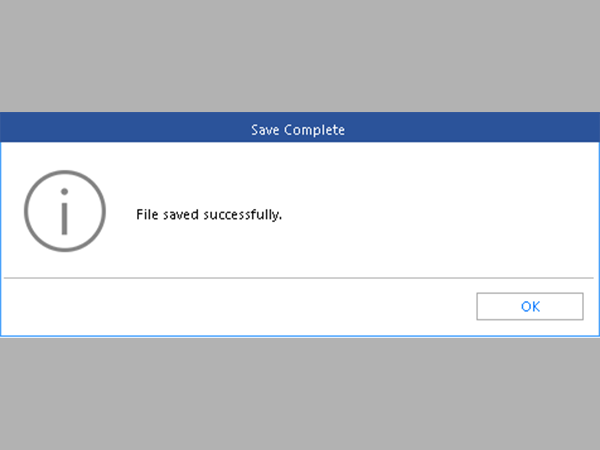
The log will display the number of rows that are saved in each table.
Here’s an MDF file that is created at the very end of the recovery process.
Testing the Software in Various Scenarios
Scenario 1: Recovering the Data with Checksum Error
To know the credibility of this software at all levels, I did another test to recover a database. Here, a user table is created with around 100 rows, and the data is modified with the DBCC WRITEPAGE undocumented command, thus generating the checksum error. The below SELECT statement was executed:
SELECT * FROM corrupted_db_data..corrupted_usertable
The following error occurred:
Msg 824, Level 24, State 2, Line 110
SQL Server detected a logical consistency-based I/O error: incorrect checksum (expected: 0xf673c379; actual: 0xf673dc79). It occurred during a read of page (1:267) in database ID 6 at offset 0x00000000216000 in file ‘C:\scambio\corrupted_db_data.mdf’. Additional messages in the SQL Server error log or operating system error log may provide more detail. This is a severe error condition that threatens database integrity and must be corrected immediately. Complete a full database consistency check (DBCC CHECKDB). This error can be caused by many factors; for more information, see SQL Server Books Online.
Completion time: 2021-12-19T21:49:22.8646037+01:00
Let’s now use Stellar Repair for MS SQL with the Advanced Scan option. The software itself recognizes that there are a total of 100 rows in the table.
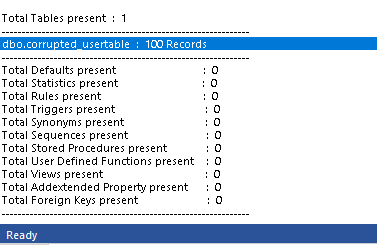
While saving the data to a new database, no error messages were displayed. Stellar Repair for MS SQL performed remarkably here. The entire table is readable now.

Scenario 2: Repair the Database with Problem on IAM Page
Another thorough test was done for trying to repair a database where there was a problem on the IAM page. Here is the result of the DBCC CHECKDB command:
DBCC results for ‘corrupted_db_data’.
Msg 8928, Level 16, State 6, Line 297
Object ID 0, index ID -1, partition ID 0, alloc unit ID 0 (type Unknown): Page (1:79) could not be processed. See other errors for details.
Msg 8905, Level 16, State 1, Line 297
Extent (1:264) in database ID 6 is marked allocated in the GAM, but no SGAM or IAM has allocated it.
Msg 8905, Level 16, State 1, Line 297
Extent (1:352) in database ID 6 is marked allocated in the GAM, but no SGAM or IAM has allocated it.
Service Broker Msg 9675, State 1: Message Types analyzed: 14.
Service Broker Msg 9676, State 1: Service Contracts analyzed: 6.
Service Broker Msg 9667, State 1: Services analyzed: 3.
Service Broker Msg 9668, State 1: Service Queues analyzed: 3.
Service Broker Msg 9669, State 1: Conversation Endpoints analyzed: 0.
Service Broker Msg 9674, State 1: Conversation Groups analyzed: 0.
Service Broker Msg 9670, State 1: Remote Service Bindings analyzed: 0.
Service Broker Msg 9605, State 1: Conversation Priorities analyzed: 0.
CHECKDB found 3 allocation errors and 0 consistency errors not associated with any single object.
DBCC results for ‘sys.sysrscols’.
There are 1243 rows in 15 pages for object “sys.sysrscols”.
[…]
There are 0 rows in 0 pages for object “sys.persistent_version_store_long_term”.
DBCC results for ‘sys.wpr_bucket_table’.
There are 0 rows in 0 pages for object “sys.wpr_bucket_table”.
Msg 8939, Level 16, State 98, Line 297
Table error: Object ID 613577224, index ID 1, partition ID 72057594043236352, alloc unit ID 72057594049724416 (type In-row data), page (1:79). Test (IS_OFF (BUF_IOERR, pBUF->bstat)) failed. Values are 133129 and -4.
Msg 8906, Level 16, State 1, Line 297
Page (1:79) in database ID 6 is allocated in the SGAM (1:3) and PFS (1:1), but was not allocated in any IAM. PFS flags ‘IAM_PG MIXED_EXT ALLOCATED 0_PCT_FULL’.
Msg 2575, Level 16, State 1, Line 297
The Index Allocation Map (IAM) page (1:79) is pointed to by the next pointer of IAM page (0:0) in object ID 613577224, index ID 1, partition ID 72057594043236352, alloc unit ID 72057594049724416 (type In-row data), but it was not detected in the scan.
Msg 8939, Level 16, State 98, Line 297
Table error: Object ID 613577224, index ID 1, partition ID 72057594043236352, alloc unit ID 72057594049724416 (type In-row data), page (1:79). Test (IS_OFF (BUF_IOERR, pBUF->bstat)) failed. Values are 133129 and -4.
Msg 7965, Level 16, State 2, Line 297
Table error: Could not check object ID 613577224, index ID 1, partition ID 72057594043236352, alloc unit ID 72057594049724416 (type In-row data) due to invalid allocation (IAM) page(s).
DBCC results for ‘corrupted_usertable’.
There are 0 rows in 0 pages for object “corrupted_usertable”.
CHECKDB found 3 allocation errors and 2 consistency errors in table ‘corrupted_usertable’ (object ID 613577224).
DBCC results for ‘sys.queue_messages_1977058079’.
There are 0 rows in 0 pages for object “sys.queue_messages_1977058079”.
DBCC results for ‘sys.queue_messages_2009058193’.
There are 0 rows in 0 pages for object “sys.queue_messages_2009058193”.
DBCC results for ‘sys.queue_messages_2041058307’.
There are 0 rows in 0 pages for object “sys.queue_messages_2041058307”.
DBCC results for ‘sys.filestream_tombstone_2073058421’.
There are 0 rows in 0 pages for object “sys.filestream_tombstone_2073058421”.
DBCC results for ‘sys.syscommittab’.
There are 0 rows in 0 pages for object “sys.syscommittab”.
DBCC results for ‘sys.filetable_updates_2105058535’.
There are 0 rows in 0 pages for object “sys.filetable_updates_2105058535”.
CHECKDB found 6 allocation errors and 2 consistency errors in database ‘corrupted_db_data’.
repair_allow_data_loss is the minimum repair level for the errors found by DBCC CHECKDB (corrupted_db_data).
DBCC execution completed. If DBCC printed error messages, contact your system administrator.
Completion time: 2021-12-20T23:02:57.3079321+01:00
After running Stellar Repair for MS SQL in this case, we will be able to attach the database. The DBCC CHECKDB command shows no error.
In both scenarios, the software performed remarkably.
Final Note
You can now clearly see that the Stellar Repair for MS SQL software performed well in recovering database in different scenarios. One thing is for sure that you are going to find this software incredibly powerful and useful. It is indeed one of the must-have tools for a database administrator (DBA).

